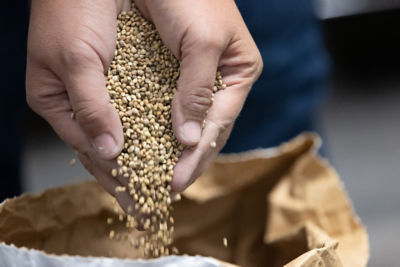Description
Three common species of thrips are serious pests of peppers and eggplant worldwide. The western flower thrips (Frankliniella occidentalis) are native to the western USA, but have been introduced into many regions worldwide. The onion thrips (Thrips tabaci) occur worldwide. The greenhouse thrips (Heliothrips haemorrhoidalis) are found in greenhouses worldwide where they cause damage to a wide range of ornamental and vegetable plants. Generally, thrips reproduce without mating. The larvae are relatively inactive, but the tiny adults (< 0.5 mm) are winged and mobile. Adults live up to 20 days, and populations can increase quickly. Thrips feed on new leaves and developing flowers, causing misshapen, twisted and cupped pepper leaves and browning of lower leaf surfaces in eggplant. Egg deposition and subsequent feeding by larvae causes scarring and discoloration in developing fruit. Yield losses can be severe for both peppers and eggplant. Though difficult to see in plants, thrips can be seen by shaking flowers and new foliage over a white sheet of paper.
Several species of thrips transmit tospoviruses. In eggplant and peppers, thrips transmit Tomato spotted wilt virus and Peanut bud necrosis virus. Thrips larvae acquire tospoviruses after short feeding periods and transmit these viruses primarily as adults. Occasionally, transmission occurs in nymphs. These viruses are not passed to the next generation, however, there is some evidence to support replication in the vector.
 Leaf distortion from thrips feeding
Leaf distortion from thrips feeding
 The western flower thrips nymph
The western flower thrips nymph




